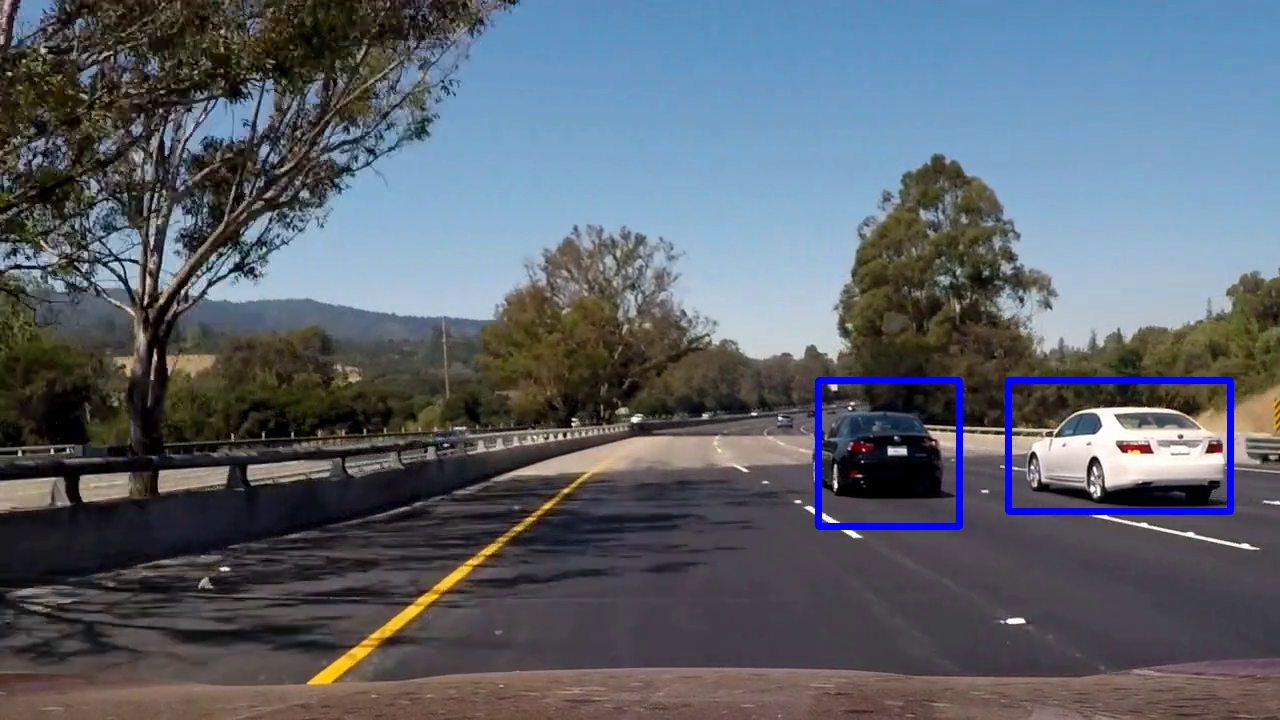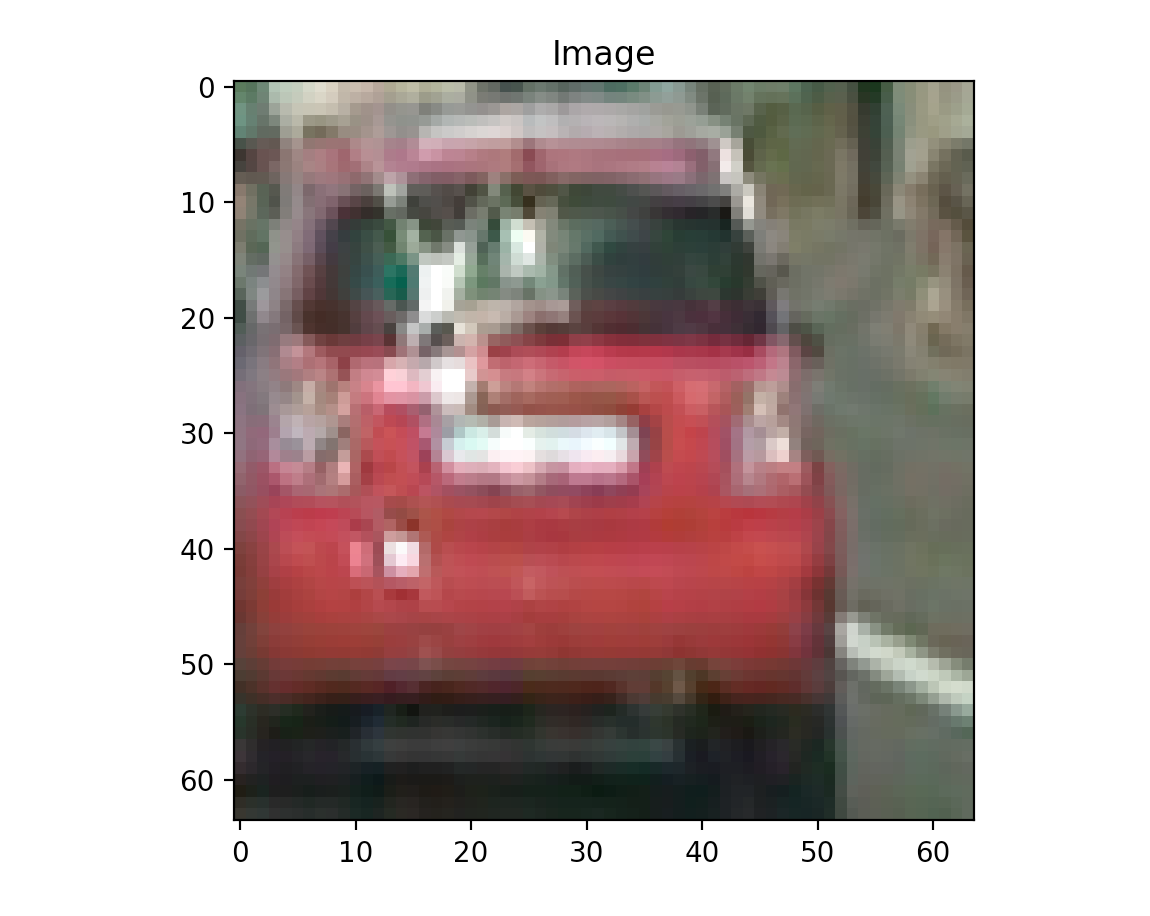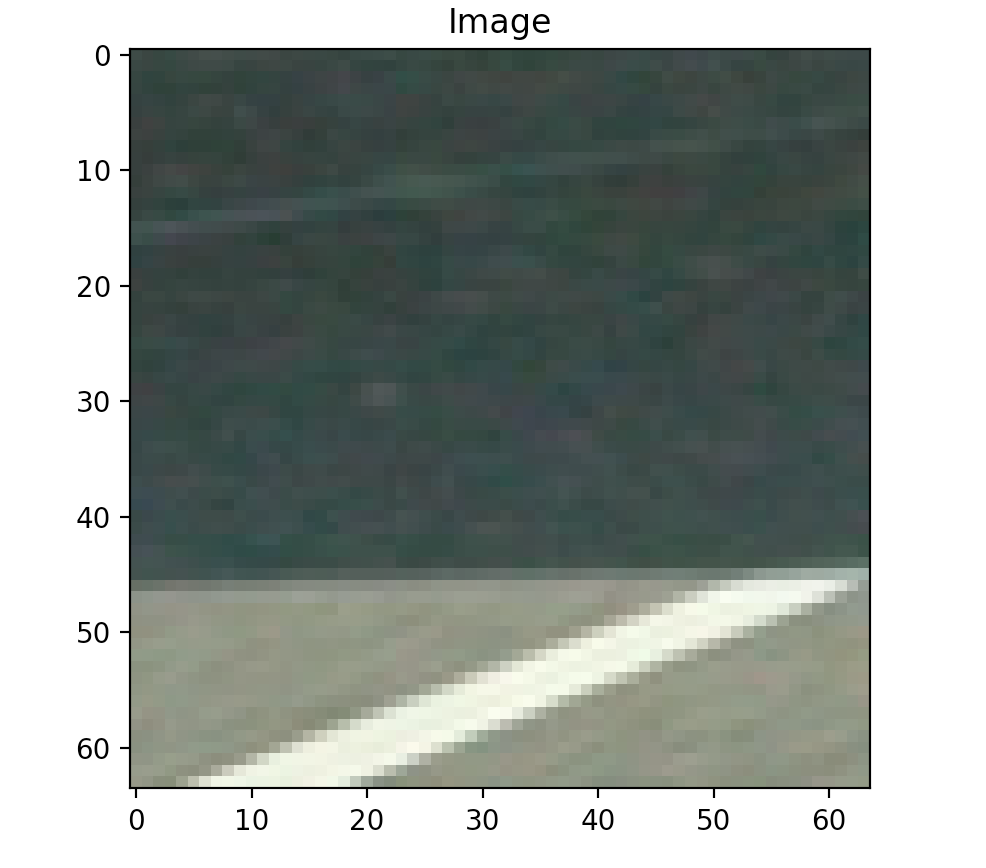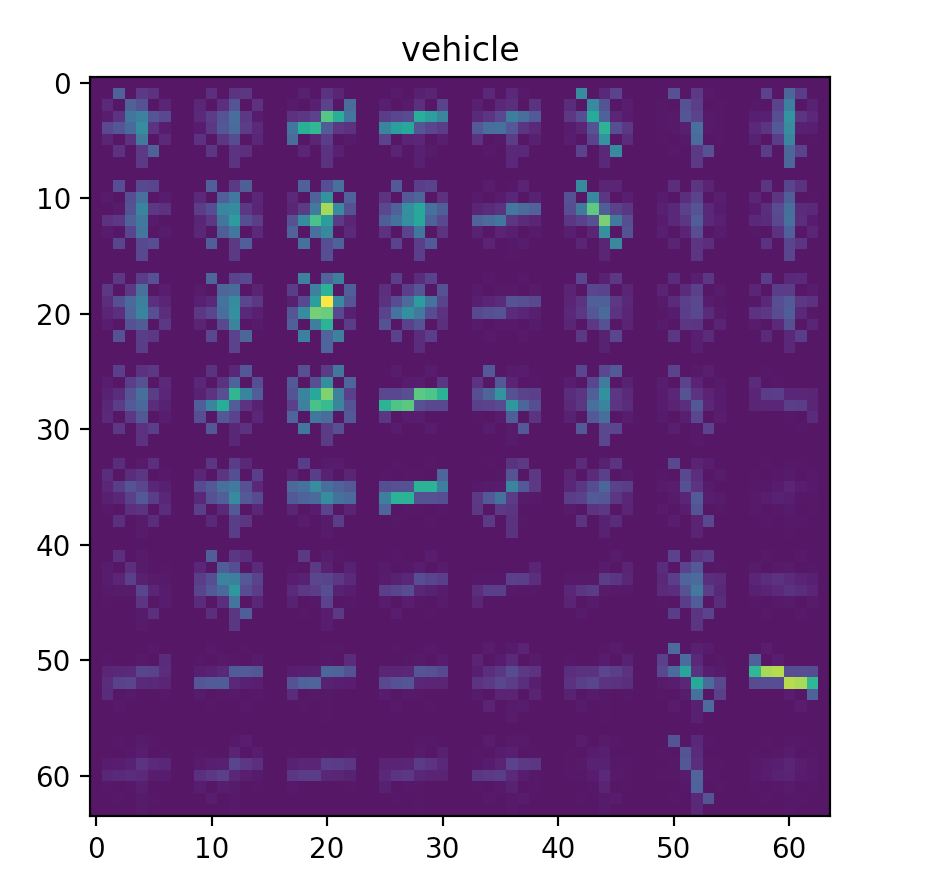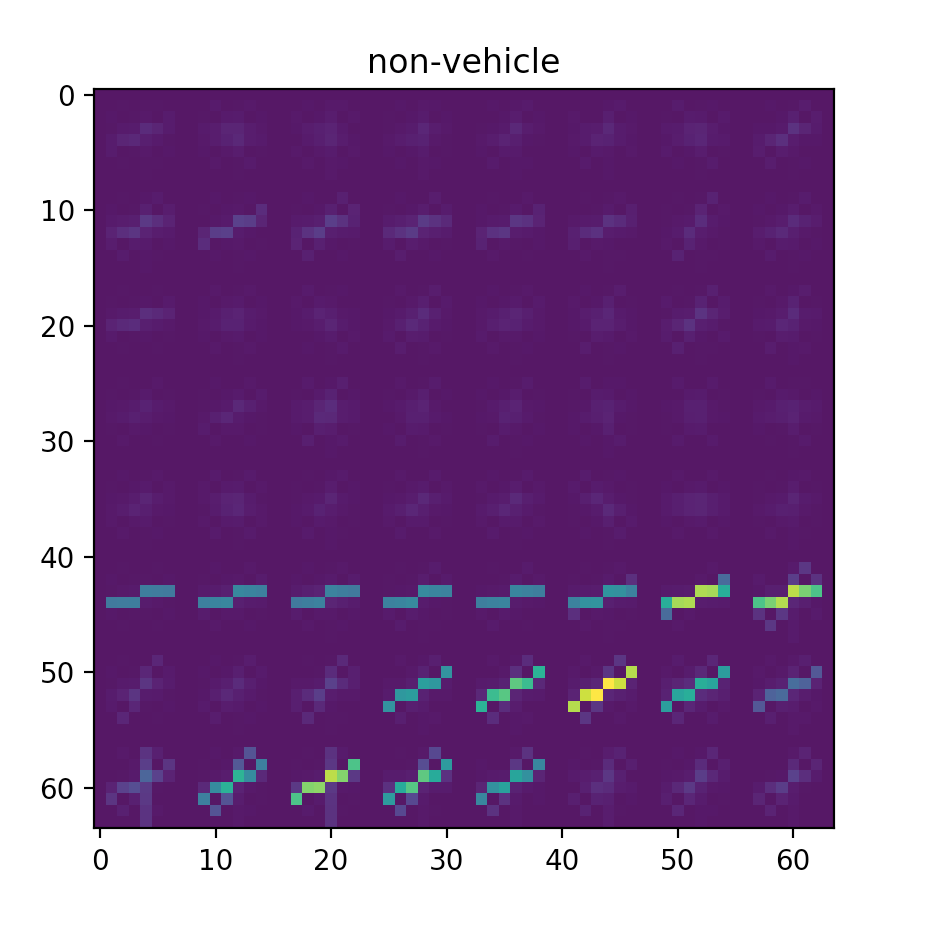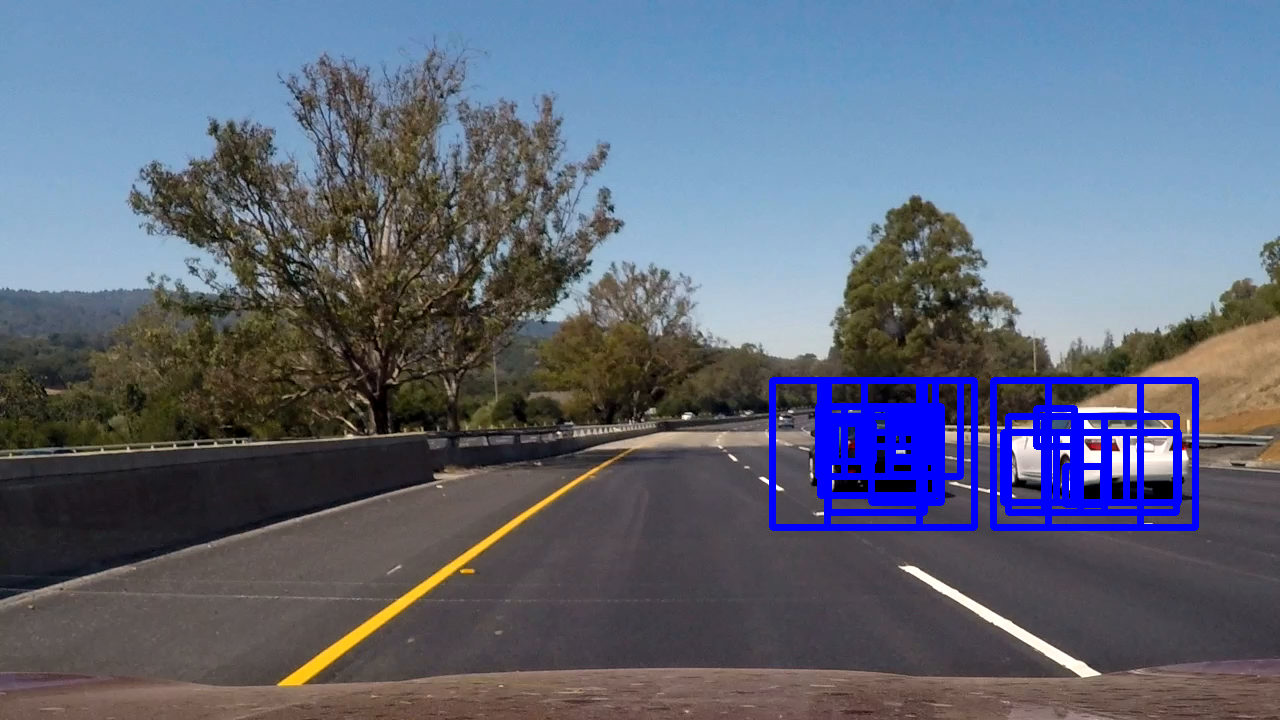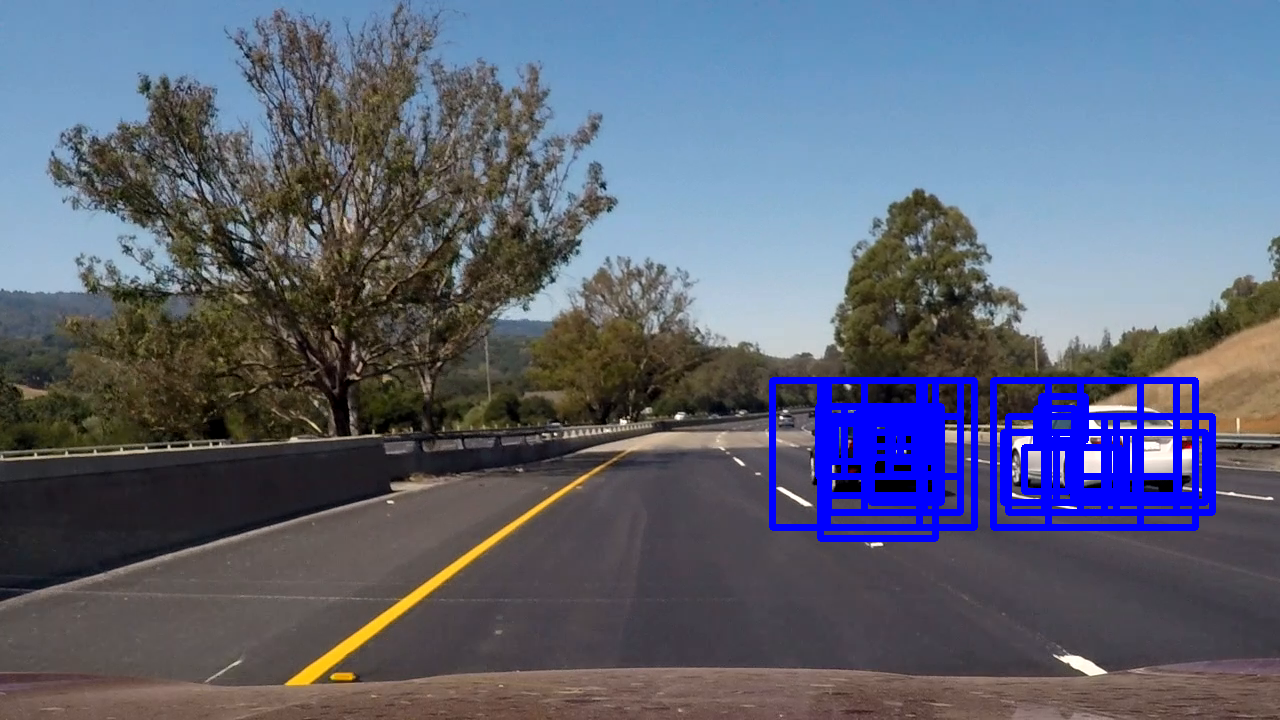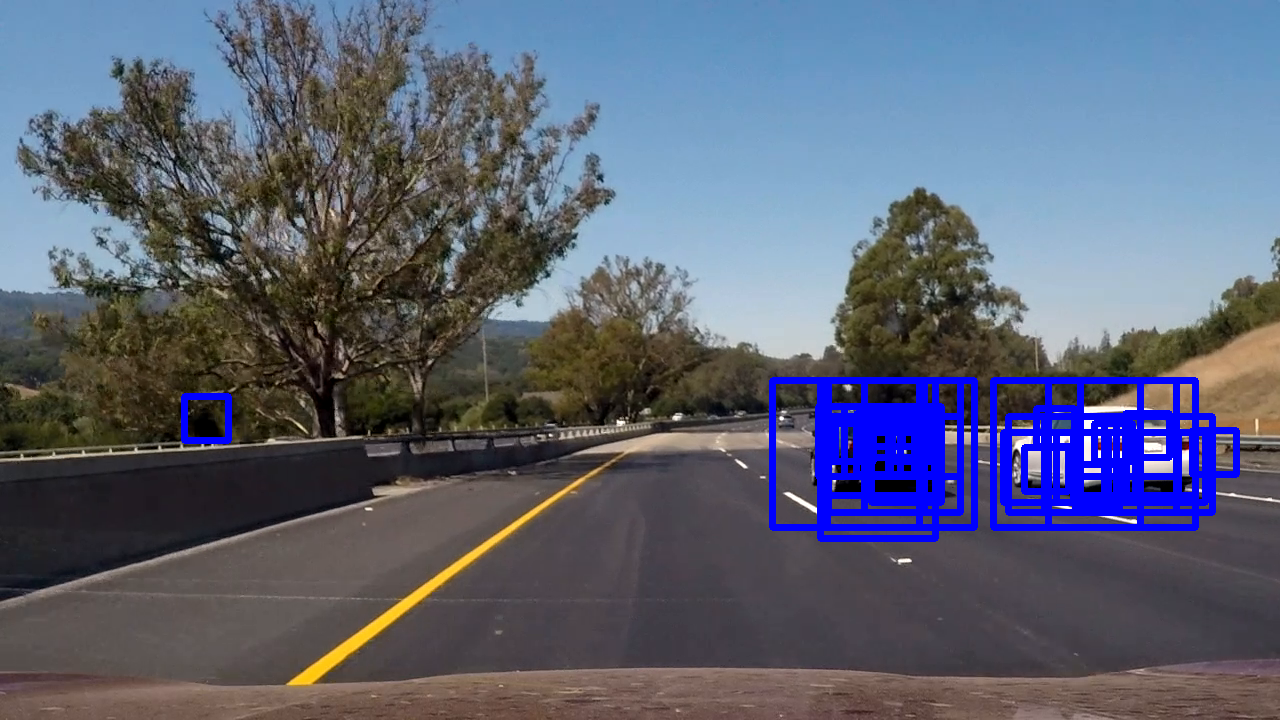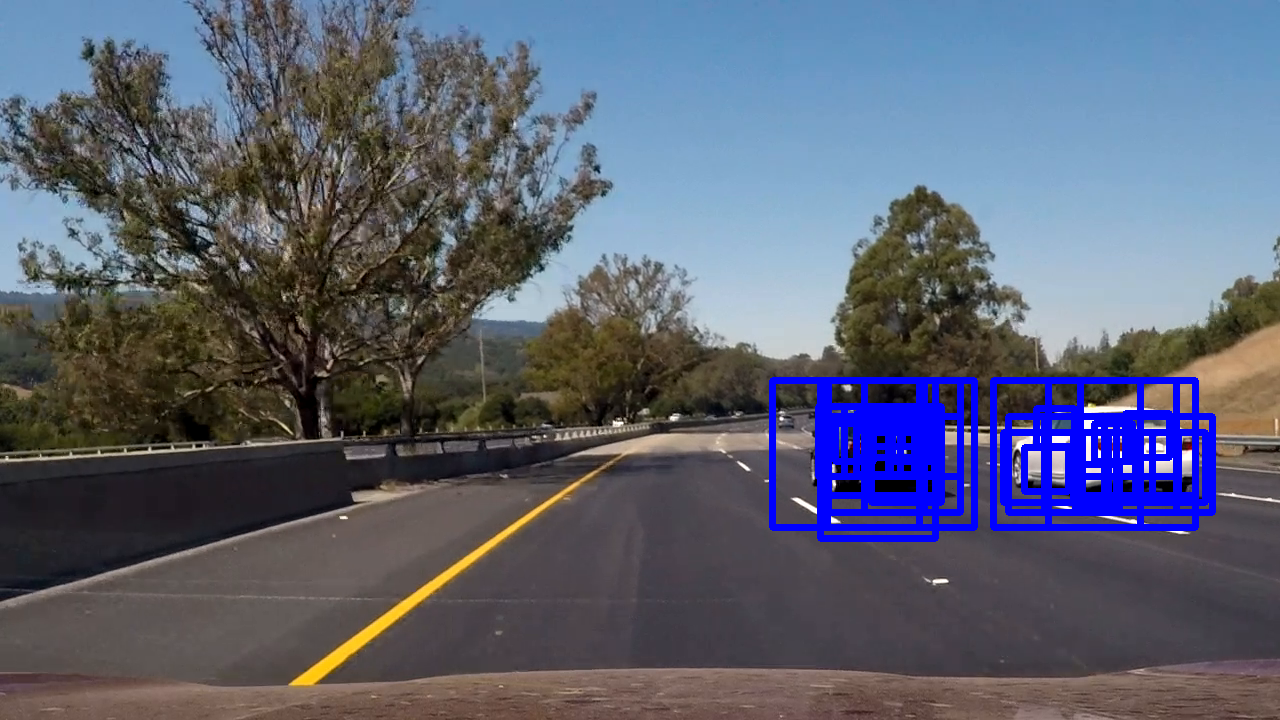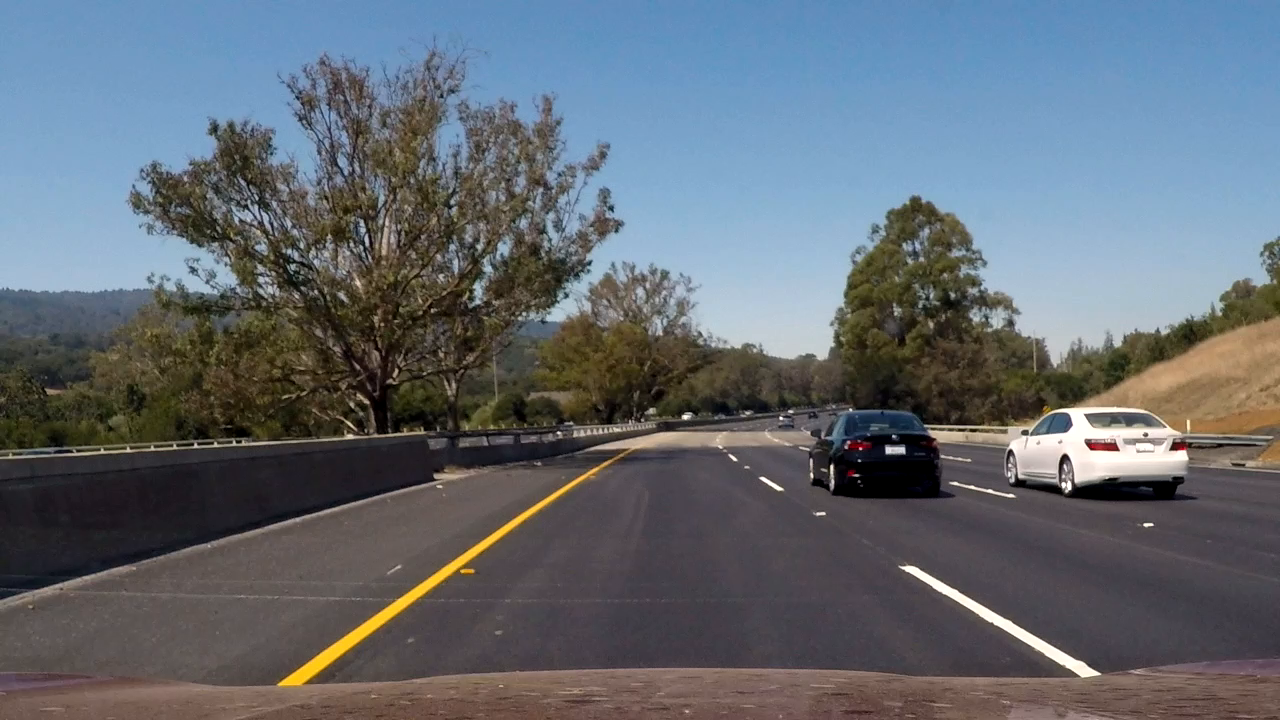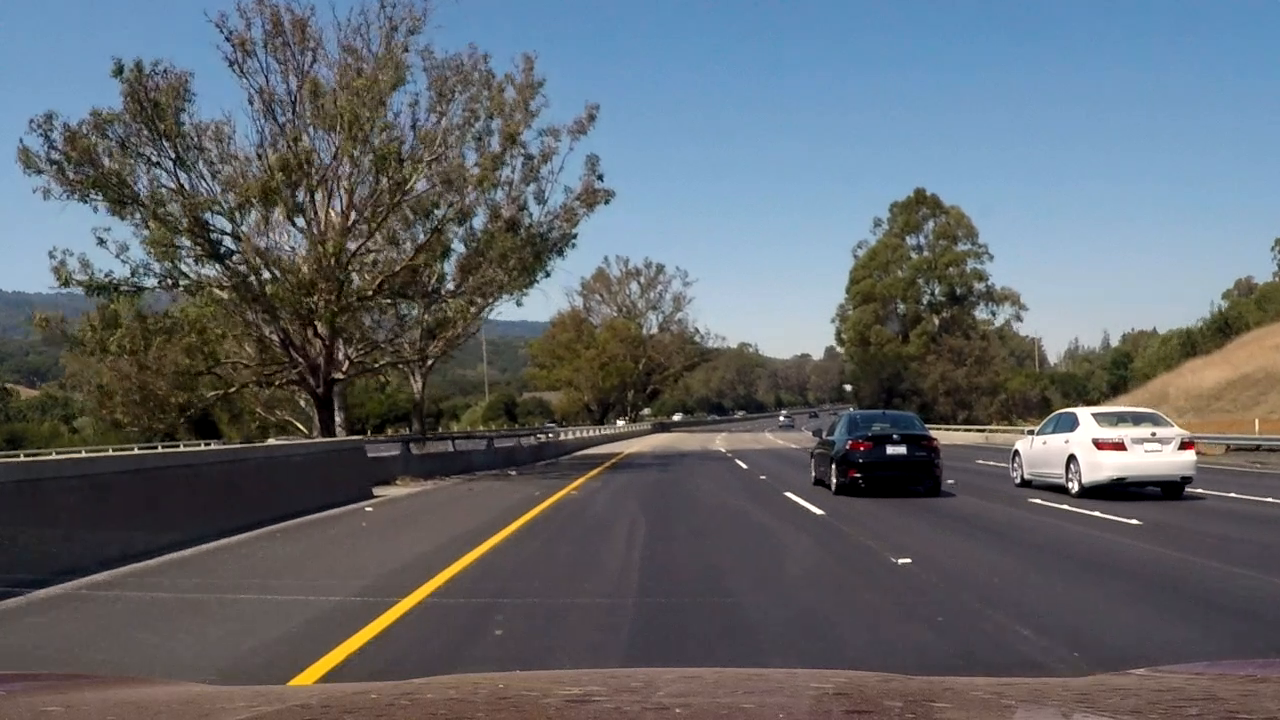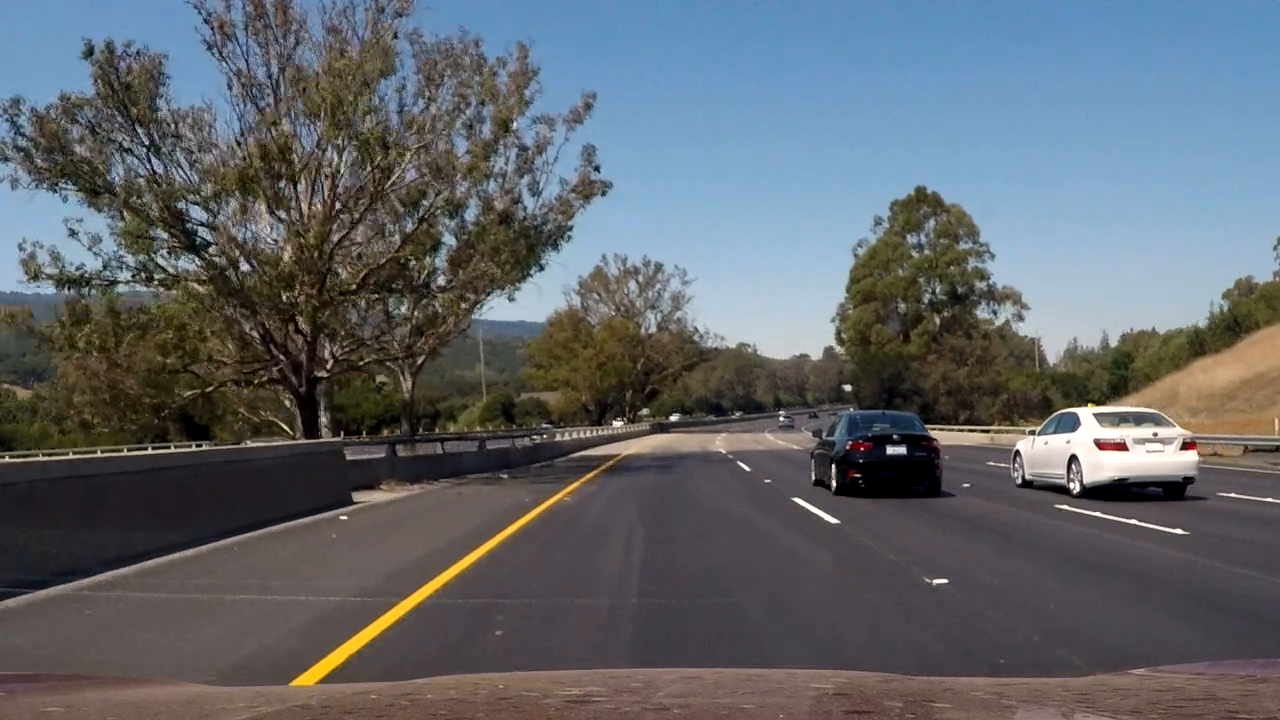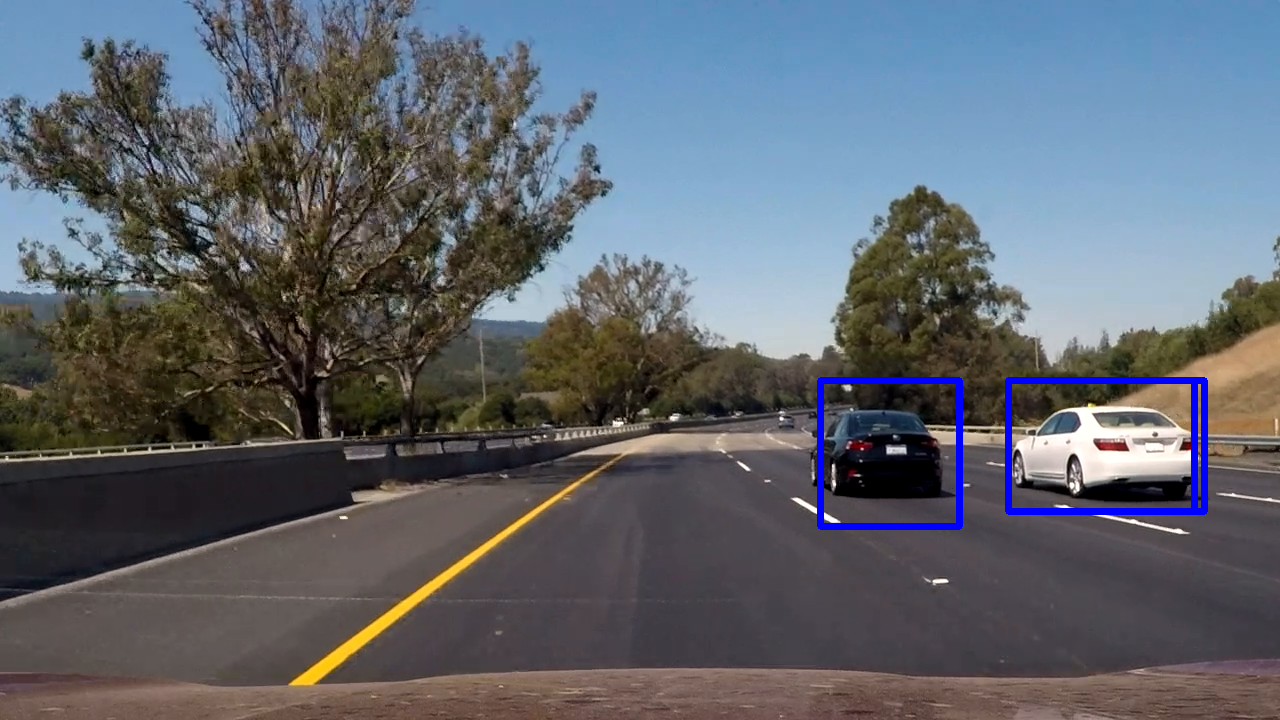The goal of this project was to create a vehicle detection pipeline. This project is part of the Udacity Self Driving Car Nanodegree (https://www.udacity.com/drive) .
The steps that were taken:
- Performed a Histogram of Oriented Gradients (HOG) feature extraction on a labeled training set of images
- Train a classifier Linear SVM classifier
- Apply a color transform and append binned color features, as well as histograms of color, to HOG feature vector
- Implemented a sliding-window technique and used the trained classifier to search for vehicles in images.
- Create a heat map of recurring detections frame by frame to reject outliers and follow detected vehicles.
- Estimate a bounding box for vehicles detected in each frame of a video.
The code for this step is contained in in lines 66 through 99 of the file called classify.py using the function extract_features() which is in processing.py.
I started by reading in all the vehicle and non-vehicle images. Here is an example of one of each of the vehicle and non-vehicle classes:
I then explored different color spaces and different skimage.hog() parameters (orientations, pixels_per_cell, and cells_per_block). I grabbed random images from each of the two classes and displayed them to get a feel for what the skimage.hog() output looks like.
Here is an example using the YCrCb color space and HOG parameters of orientations=9, pixels_per_cell=(8, 8) and cells_per_block=(2, 2):
** Vehicle **
** Non Vehicle **
I tried various combinations of parameters and applied them on to separate test images. I measured the time taken to create a HOG image and the tradeoff on the difference between the output visualizations. I settled on sticking with the orientations=9, pixels_per_cell=(8,8) and cells_per_block=(2,2).
I trained a linear SVM using sklearn in classify.py 167 to 190.
I add color features as well by including spatial binning of a resized image and a color histogram to the feature set.
I implemented a sliding window search in find_cars() in processing.py lines 62 to 149.
I looped through the scale in steps of 0.1 from 0.4 to 3.0. I saved each output and went through them manually using the test images. I saw that after a scale of 2.4 or so there didn't seem to be many useful predictions.
Ultimately I searched on 5 scales using YCrCb 3-channel HOG features plus spatially binned color and histograms of color in the feature vector, which provided a nice result. Here are some example images:
Here's a link to my video result
I recorded the positions of positive detections in each frame of the video. From the positive detections I created a heatmap and then thresholded that map to identify vehicle positions. I then used scipy.ndimage.measurements.label() to identify individual blobs in the heatmap. I then assumed each blob corresponded to a vehicle. I constructed bounding boxes to cover the area of each blob detected.
Here's an example result showing the heatmap from a series of frames of video, the result of scipy.ndimage.measurements.label() and the bounding boxes then overlaid on the last frame of video:
Here is the output of scipy.ndimage.measurements.label() on the integrated heatmap from all six frames:
I think the algo would fail if it was snowing heavily. I think we would need a different set of features in those conditions for the detection algorithm to work. I could maybe add colors and train with images of cars in different weather conditions - snow, rain, high sunlight, running in a tunnel etc.
I also wonder if it would make sense to change to make the features color invariant as the images we trained on are from computer games and may not represent the set of real cars very well. Also the shapes of cars will change in the future so we need to think broader in terms of shapes.
Also for example motorcycles and other forms of transport aren't in the training set so we really need to be able to differentiate the foreground - i.e. things moving as fast as the car and the background which is stationary. I think this would be a better method.
